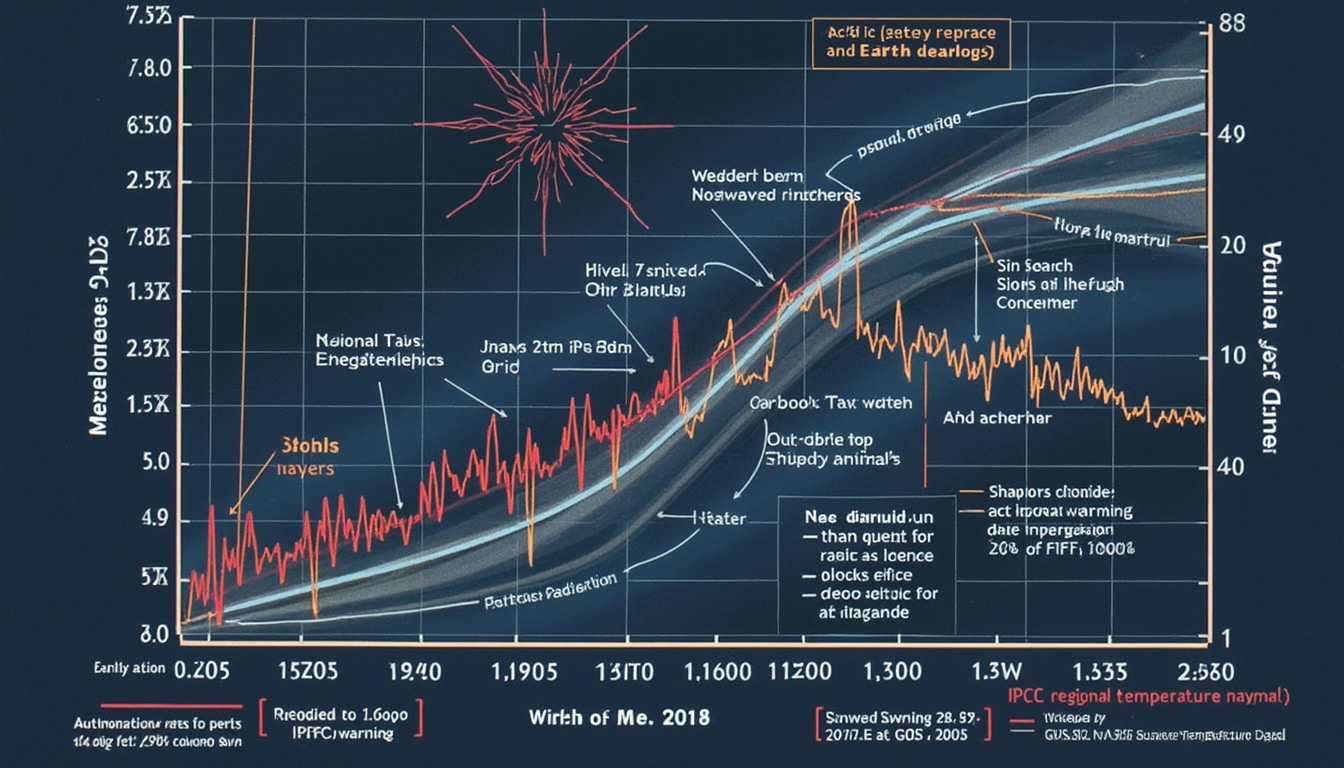The recent spike in global temperatures has not only caught the attention of scientists but has reignited discussions about climate science. In 2024, the world experienced its warmest year on record, surpassing previous highs that were established just one year prior. As temperatures reached astonishing levels, the immediate question arose: what factors contributed to such a staggering increase? Experts suggest that the recent El Niño event, coupled with ongoing global warming, plays a significant role, yet many are left pondering what else might be influencing this rapid shift. At the forefront of this inquiry is a new satellite launched by NASA, designed specifically to provide crucial insights into atmospheric conditions and their effects on the Earth.
Understanding the Temperature Surge
Recent climate data from 2024 indicates a dramatic rise in global temperatures, sparking a wave of studies aimed at determining the underlying causes. The role of atmospheric conditions cannot be understated, as researchers have launched new investigations into the specific boxes of the planet’s energy balance — factors that regulate how much energy enters and leaves our atmospheric system. Publications such as those found in Nature have examined various contributors to this phenomenon, revealing significant findings.
Key insights suggest that the behavior of atmospheric aerosols — tiny particles suspended in the atmosphere — can greatly affect the planet’s ability to manage thermal energy. Aerosols can reflect sunlight and, when present in higher concentrations, can potentially cool the planet. Conversely, the significant reduction in aerosol levels due to pollution controls could lead to a warmer planet as more sunlight reaches the surface. Researchers studying these dynamics acknowledge that withdrawing aerosols from the atmosphere may have unforeseen consequences, including an increased rate of warming.

The PACE Satellite: A New Tool for Climate Understanding
NASA’s recent satellite launched under the PACE mission, which stands for Plankton, Aerosol, Cloud, ocean Ecosystem, aims to address the gaps in our understanding of atmospheric conditions. With its cutting-edge technology, PACE is capable of mapping the distribution of atmospheric aerosols, providing valuable data on their properties — how they reflect light, absorb heat, and interact with each other. This mission will significantly enhance researchers’ ability to model and predict climate patterns and temperature fluctuations.
The impending operational capabilities of the PACE satellite are much anticipated among scientists. While preliminary data began circulating in April 2024, the satellite is still undergoing verification to ensure the data meets strict quality standards before being utilized in climate models and other important analyses.
Quantifying Energy Imbalance
The concept of the energy balance of our planet is crucial to understanding climate interactions. The amount of solar energy absorbed by Earth, compared to the energy radiated back into space, sets the foundation for global temperature. In recent studies, including reports from NASA, it has been shown that a disruption in this balance can lead to dramatic shifts in climate conditions.
Research published in Environmental Research Letters has focused specifically on quantifying this energy imbalance, aiming to shed light on the contributors to the surge in temperatures. With increasing greenhouse gases trapping more heat, the subsequent impact of diminished aerosol concentrations combines to create a warmer Earth. The dual effect of these changes underscores the complex dynamics that are still being unraveled in climate science.

Aerosols: The Hidden Players in Climate Change
Atmospheric aerosols, once considered minor players in the global warming narrative, are emerging as significant factors influencing climate change. These fine particles can arise from natural sources like volcanic eruptions and from human activities such as industrial emissions. Their capacity to reflect sunlight makes them potent agents for cooling. However, the global effort to reduce pollution has led to a drastic decrease in aerosol levels, unknowingly pushing temperatures higher.
With the ongoing temperature rise, it is crucial to reassess the role of aerosols within climate models. Scientists recognize that a deeper understanding of their behavior is essential to forecast the future of our climate. As NASA’s PACE and similar satellite missions collect more data, climate models will likely evolve to incorporate these nuances, resulting in more accurate predictions and solutions.
The Anticipated Impact of the PACE Mission
The launch of NASA’s PACE satellite represents a critical investment in climate science. As researchers eagerly await the data that will emerge from the satellite, they anticipate that its findings will unlock new avenues for understanding climate dynamics. This cutting-edge technology promises to make substantial contributions to comprehending the relationship between aerosols, clouds, and overall temperature trends.
As trends have shown in recent reports, including those from initiatives such as NASA JPL, satellites like PACE will help elucidate the effects of climate change on various geographic regions, from polar climates to tropical zones. Their data may enable policymakers to make more informed decisions regarding climate strategies and interventions.

Preparing for a New Era of Climate Research
The PACE mission is an example of how technology is transforming climate research. As scientists adapt to the deluge of new information that space-based observations provide, the potential restructuring of long-standing categorizations within climate science becomes apparent. The data gathered may not only reveal the intricacies of aerosols and their interaction with clouds, but also how these factors contribute to long-term trends in the global temperature rise that we are witnessing today.
Further connections to other climate phenomena, such as the trend toward more intense El Niño and La Niña events, may also emerge from the data. The extensive capabilities of the PACE satellite extend its relevance beyond merely providing temperature data; it may ultimately help us predict extreme weather patterns arising from changes in overall climatic balance. This interconnectedness of information elucidates the importance of integrated science approaches and collaborative efforts.
Conclusion: A Collaborative Approach to Understanding Our Climate
As we grapple with rising temperatures and an increasingly unstable climate, it is clear that a collaborative approach is essential. Leveraging technology such as NASA’s PACE satellite alongside other research initiatives, we can work toward a more complete understanding of how various factors interrelate in the grand scheme of climate science. Making sense of the quandaries posed by warming temperatures—a phenomenon that impacts ecosystems, economies, and human lives alike—requires a concerted effort from scientists, policymakers, and the global community.
The outcomes of the PACE project could indeed reshape our present understanding and preparedness for future climate-related challenges. Through vigilant observation and continued research, a clearer picture of our evolving world will emerge, allowing us to forge paths toward sustainability and resilience in the face of change.




Leave a Reply